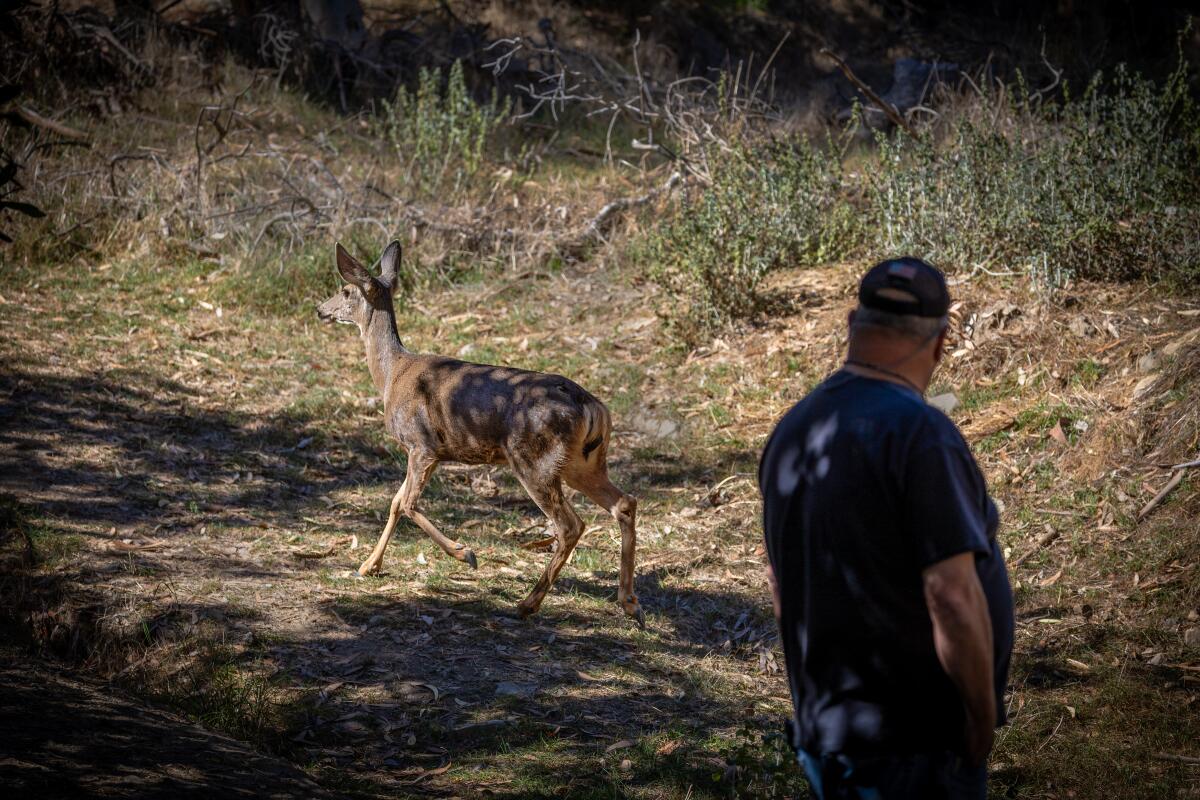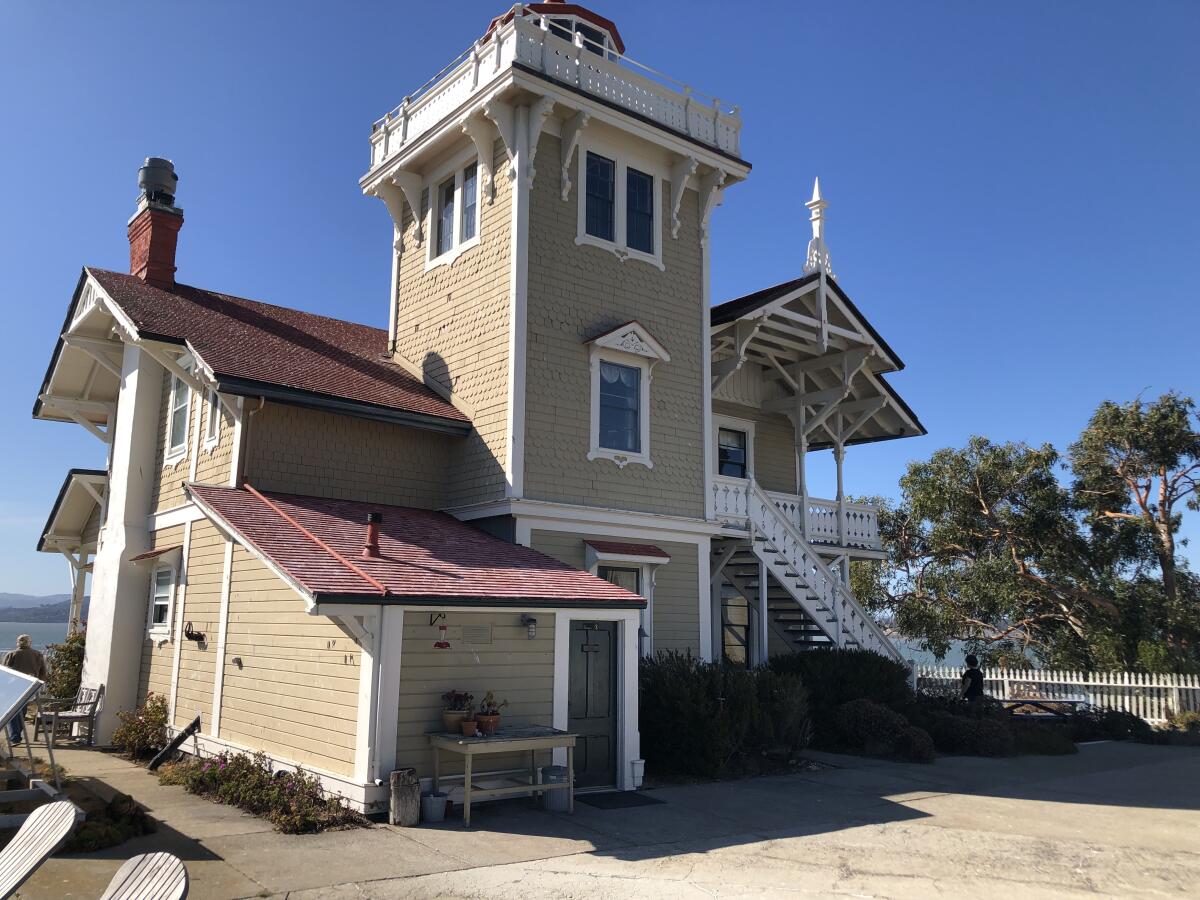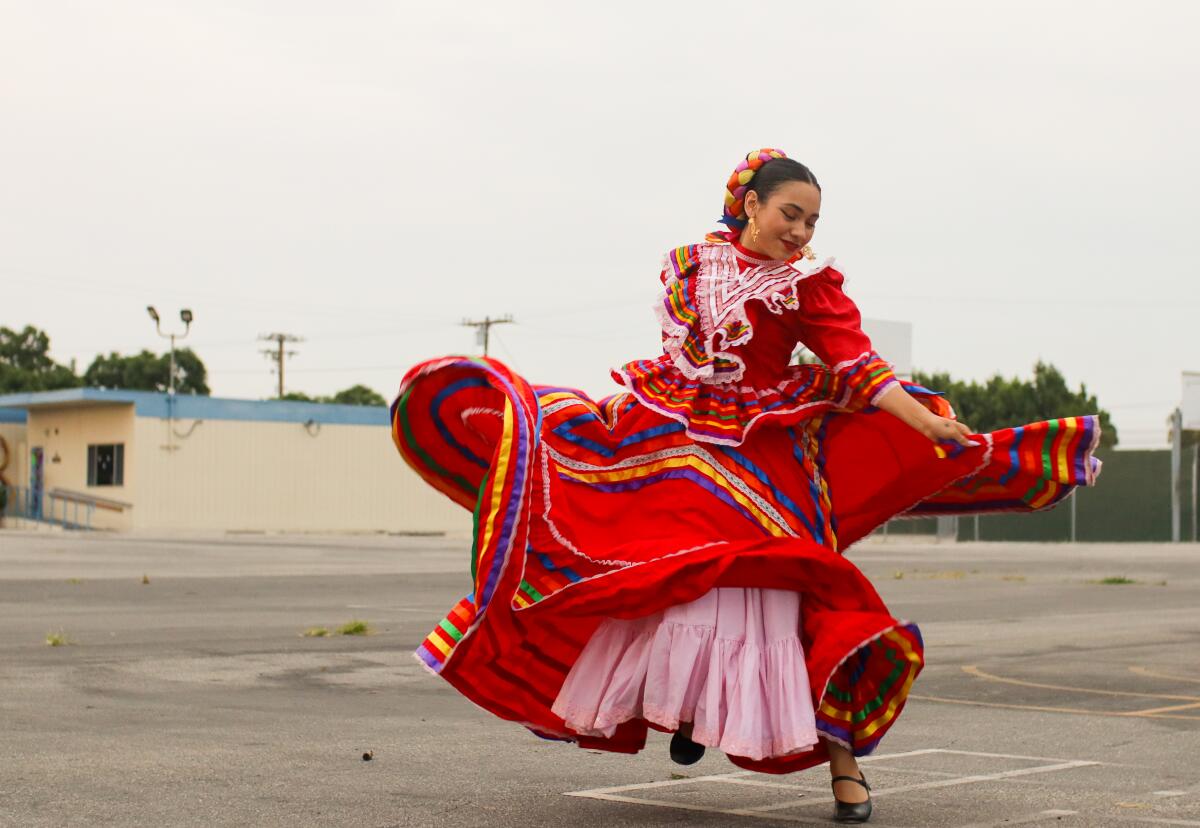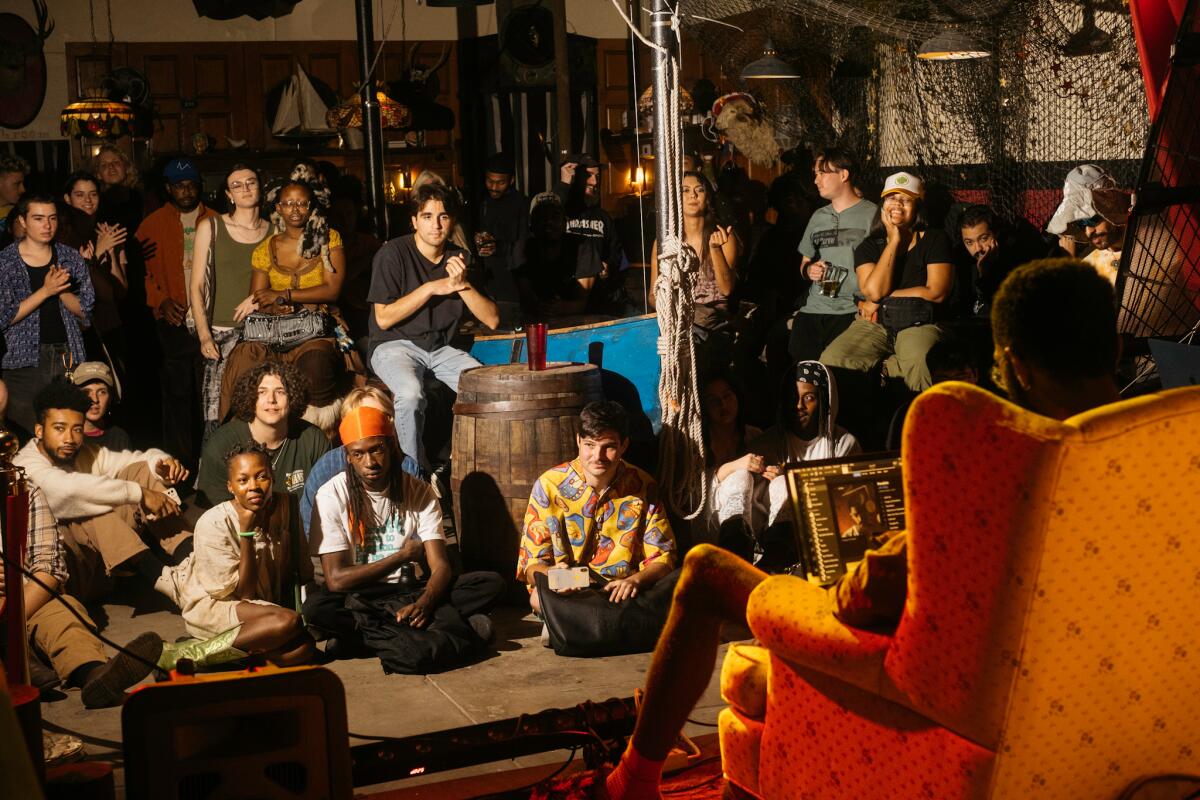We just fell behind. Should we stay here? Readers weigh in on daylight saving time

- Share via
Good morning. It’s Monday, Nov. 6. Here’s what you need to know to start your day.
- Readers weigh in on daylight saving time
- Inside the debate over deer on Catalina Island
- L.A.’s buzziest jazz shows are secret havens for fans
- And here’s today’s e-newspaper
Sign up for Essential California
The most important California stories and recommendations in your inbox every morning.
You may occasionally receive promotional content from the Los Angeles Times.
We just fell behind. Should we stay here?
Pop quiz: What time is it? The right answer as of Sunday morning would have been the wrong answer 24 hours prior.
That’s right, yet again we’ve changed our clocks, marking the end of daylight saving time (DST) and falling back into standard time to sync up with the majority of world nations.
So what even is time when we so regularly tinker with our collective definition of it?
As Heinrich Gompf, a sleep researcher with UC Davis Health’s Department of Neurological Surgery explained to me recently, life on Earth is naturally synced to sunlight.
“We are on a planet that has approximately 24-hour rhythms,” Gompf said. “We have not really found any species that does not have some sort of an internal clock that helps all of us anticipate the daily light-dark cycle.”
Humans’ use of the clock as the shared social construct of time is a relatively new phenomenon, which came about mainly through one key piece of 19th century technology: the locomotive. As railroads expanded across the U.S. and around the world, it became necessary to set a standard so people knew what it meant that the train would arrive at 2:15 p.m. Before that, individual towns and cities used sundials to track the sun’s path across the sky, which varied slightly, place to place, even if those places were close together.
As I wrote last week, the U.S. first enacted daylight saving time in 1918 primarily to conserve fuel during WWI. The change was also beloved by business interests, as people had additional evening sunlight to go shopping and recreate.
But a lot has changed since the early 1900s. Sunset doesn’t send us all racing home before it gets too dark because we have electricity in abundance. Research shows that changing the time — especially in the spring — isn’t good for our bodies. And despite arguments that DST would help cut energy use, different studies over decades show different outcomes. One meta-analysis that looked at 162 estimates from 44 studies found average daily energy savings during DST days “amounted to 0.34% of total electricity consumption.”
So we put that question to you, newsletter readers: Should we stop doing this time warp?
Should we end DST (fall behind and never spring ahead again), make DST the norm (never fall back again), or just keep springing and falling into oblivion?
Hundreds of you took our survey and voiced your temporal preference. Now, this was by no means a scientific poll, but your responses spanned the gamut from adamantly anti-DST to full-fledged DST fans to those in the I-really-don’t-care-but-please-for-the-love-of-god-just-pick-one camp. But the largest share of responses were very clear that they’d prefer to fall behind and stay there, describing daylight saving as “illogical,” “archaic” and “insane.”
“DST is a communal act of lying to ourselves,” wrote Richard J. from Marshall, Texas. “Noon should occur in the middle of the day (more or less); our bodies and minds will thank us if we allow them to function the way they are intended to function.”
Those who want DST to become the norm cited enjoying more evening light to run errands and spend time outside with family and friends.
Californians actually voted on the time change issue back in 2018, with a majority supporting a state ballot initiative that would allow state legislators to pick one time year-round, though there would need to be additional legislation to determine if we’d go with standard time or DST — which hasn’t happened yet.
Here’s a tiny selection of what your fellow readers had to say about DST (edited for style and clarity).
“The time it takes to readjust to the new time each spring is brutal, completely senseless, and counterproductive. There are so many issues to consider in our routinely complicated schedules as it is; we don’t need to keep repeating the difficult return to daylight saving time.”
— Michele L., Lake Arrowhead
“DST needs to be the norm. I realize this makes it dark in the mornings, but the extra hour of sunlight in the evenings is worth it. … We live in the greatest state in the union. Why not bathe it in the beautiful sunlight that we all enjoy in the evenings when we can enjoy it rather than looking at it through the windows while we are working? It’s a no-brainer!”
— Jason B., Chico
“My body simply works better on standard time. DST is always a big adjustment for me to make, and it would certainly be a relief to see the practice ended. My grandfather used to muse that we should simply split the difference by setting our clocks one half hour in between [standard time] and DST hours, but that would likely cause problems with international time keeping.”
— Steven H., Covina
“Keep it as it is. It’s frankly an excellent way to mark the change of seasons. Stopping the clock change won’t make the days longer, which I have the impression from talking to people is what some believe will happen. … I vividly remember that short-lived experiment in the ‘70s: It was still full dark at 8 a.m., when kids were going to school, and it was a nightmare.”
— Melanie C., Berkeley
“I favor staying on DST… I get the morning darkness means kids will be leaving for school in the dark, but we do that anyway in the two months on either side of the winter solstice. I enjoy the late summer evenings more than the bummer of a late winter sunrise. Ultimately I would be happy if we just picked one and stuck with it. The springing and falling downright sucks.”
— Mick K., Simi Valley
“As a person who jogs early in the a.m., it is a real pain right now (and will be again when we go back on DST in the spring) for it to be dark essentially until 7 a.m. Also, I think that the gradual progression of the day length and the clock … is just much easier for the body and mind to deal with — one grows accustomed to earlier sunset (or whatever) gradually rather than by a violent yank. Losing that hour in the spring is a particular wrench. I lived in Arizona for nearly 10 years and loved not going on DST.”
— Lucinda M., Claremont
“An extra hour of daylight at the end of the day helps give folks “trapped” at work an extra hour to run errands. As a driving instructor, I tend to work afternoons/nights since most of our clientele are teenagers, or young adults that have school or work during the day. They could use that extra hour of daylight driving to get safer practice.”
— Warren H., Anaheim
“I personally don’t like it when it gets dark so late. Even if you don’t change the clock, days get longer following the vernal equinox and shorter following the autumnal equinox. It is a pain adjusting to the change twice a year. It is only fooling your brain that it’s earlier or later. You aren’t changing the rotation of the Earth.”
—Tiffany H., Morgan Hill
Today’s top stories

Wildlife and the environment
- A planned deer slaughter on Catalina Island has sparked a firestorm of protest as residents push back against conservationists who say the culling is necessary to protect the island’s ecosystem.
- Someone has been illegally rounding up and killing parrots throughout Temple City and perhaps the greater San Gabriel Valley for about a week, perplexing residents and police.
Labor
- A new law mandating medical employees be paid at least $25 an hour now has an estimated price tag: $4 billion in the 2024-25 fiscal year alone, making it one of the most expensive laws California has seen in years.
- Disneyland workers are primed for a big salary bump after winning living-wage legal battle.
Law enforcement
- For months, someone has been filing anonymous complaints against senior members of the Los Angeles Police Department using the pseudonym “Mel Smith.” LAPD’s top brass is left wondering who it really is.
- San Bernardino police were recently investigating a squatters case at a residence when they made a surprising discovery inside: two baby alligators.
Hollywood
- SAG-AFTRA is reviewing what studios say is their ‘last, best and final offer’ to end strike
- Ari Emanuel’s Endeavor, the first Hollywood talent agency to go public, flopped on the stock market. Now it’s probably going private again.
- Disneyland workers are primed for big salary bump after winning living-wage legal battle
More big stories
- Hundreds of people participated in a pro-Palestinian rally and march Saturday in front of the Israeli Consulate in West Los Angeles, condemning Israel’s invasion of the Gaza Strip.
- After witnessing the death of a woman at a carrot field, New Cuyama farm workers said supervisors told them to keep picking while her body lay under a blanket a few feet away.
- Prosecutors have made closing arguments in their case against the captain of the Conception over the 2019 boat fire that killed 34 people.
- The Supreme Court agreed Friday to rule on whether the government may ban the sale or use of “bump stocks” that can transform a semiautomatic rifle into one that shoots hundreds of bullets per minute with a single pull of the trigger.
- Expectations are soaring for No. 4 UCLA. How will the Bruins respond?
Get unlimited access to the Los Angeles Times. Subscribe here.
Commentary and opinions
- Michael Hiltzik: Sam Bankman-Fried’s seven guilty verdicts expose crypto as a swindle through and through.
- LZ Granderson: How did Silicon Valley fall from idealism to ruthless exploitation?
- Opinion: I’m one of millions struggling to care for aging parents. It shouldn’t be this hard.
- Opinion: I run an L.A. homeless services organization. But I can’t afford to live in L.A. anymore.
- Opinion: Republican tactics to suppress the Black vote echo those seen after the Civil War.
- Opinion: Eyeliner has political power — it’s a link to our ancestors and a sign of rebellion.
Today’s great reads
‘It was like being transported into México’: How fólklorico helps students connect with their roots. Many first-generation Latinos in the U.S. are searching for ways to connect with their roots. For these students, the answer lies in dance.
More great reads
- California’s oldest tree, a Palmer’s oak thought to be 13,000 to 18,000 years old, may be threatened by a proposed development, environmentalists say.
How can we make this newsletter more useful? Send comments to essentialcalifornia@latimes.com.
For your downtime
Going out
- 🎺 Minaret Records is quickly becoming a beacon of L.A.’s local jazz community with secret shows and a cult following.
- 🖼 The Alfredo Boulton exhibit at the Getty is a nostalgic dive into Venezuelan art.
- 🌳 Here’s your first look inside Disneyland’s new Adventureland Treehouse.
Staying in
- 🎬 Read Meg Ryan on the essentials of good rom-coms — and her long-awaited return to them.
- 🦃 It’s time to start planning. Here are 12 essential recipes for your classic Thanksgiving.
- ✏️ Get our free daily crossword puzzle, sudoku, word search and arcade games.
And finally ... a great photo
Show us your favorite place in California! Send us photos you have taken of spots in California that are special — natural or human-made — and tell us why they’re important to you.

Today’s great photo is from John Ingram of Long Beach: East Brother Light Station, near the junction of San Francisco and San Pablo bays. John notes that not only is this lighthouse beautiful, you can also experience it up close — it’s a bed and breakfast.
Have a great day, from the Essential California team
Ryan Fonseca, reporter
Laura Blasey, assistant editor
Check our top stories, topics and the latest articles on latimes.com.
Sign up for Essential California
The most important California stories and recommendations in your inbox every morning.
You may occasionally receive promotional content from the Los Angeles Times.









